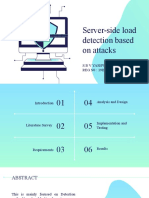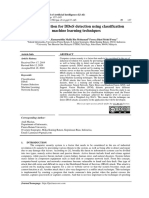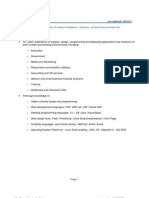0% found this document useful (0 votes)
22 views3 pagesDdos Document
This project develops a web-based system using Flask and a Naïve Bayes classifier to detect DDoS attacks from uploaded network traffic data. It achieves approximately 95% accuracy on the test dataset and includes features for file upload and result display. Future enhancements may involve real-time analysis, visualizations, and cloud deployment.
Uploaded by
facapa9164Copyright
© © All Rights Reserved
We take content rights seriously. If you suspect this is your content, claim it here.
Available Formats
Download as PDF, TXT or read online on Scribd
0% found this document useful (0 votes)
22 views3 pagesDdos Document
This project develops a web-based system using Flask and a Naïve Bayes classifier to detect DDoS attacks from uploaded network traffic data. It achieves approximately 95% accuracy on the test dataset and includes features for file upload and result display. Future enhancements may involve real-time analysis, visualizations, and cloud deployment.
Uploaded by
facapa9164Copyright
© © All Rights Reserved
We take content rights seriously. If you suspect this is your content, claim it here.
Available Formats
Download as PDF, TXT or read online on Scribd
/ 3
























































































